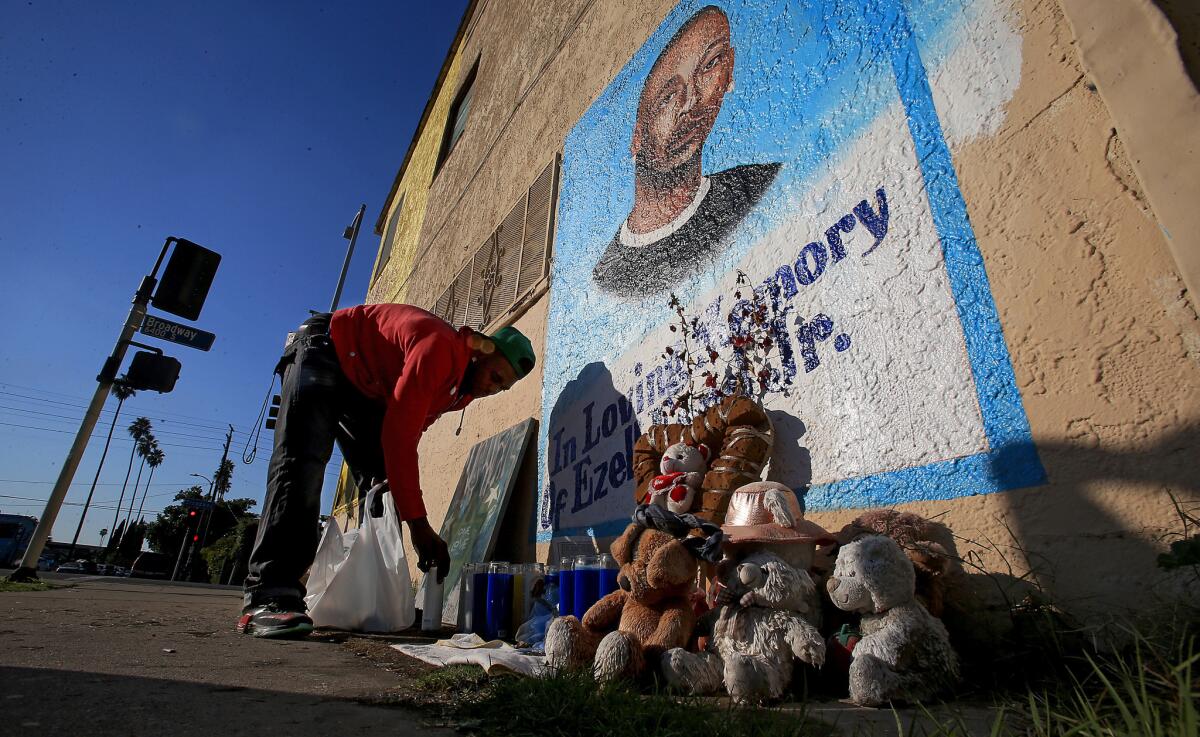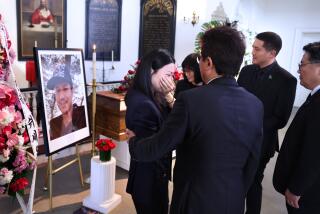Ezell Ford autopsy: Four experts give their verdicts

- Share via
The Times asked four use-of-force experts to review the autopsy of Ezell Ford, a mentally ill black man killed by police in South Los Angeles in August.
The report showed Ford was shot three times — once in the right side, once in the right back and once in the right arm. The gunshot wound on his back showed that the surrounding skin had a “muzzle imprint,” according to the autopsy, suggesting that the shot was made at very close range. The autopsy said the back and side gunshot wounds were fatal.
Merrick Bobb
Merrick Bobb, who for years was the civilian overseer of the Los Angeles County Sheriff’s Department, said he didn’t see anything “particularly remarkable” in the autopsy report that would color his opinion of the officers’ actions.
Bobb said the police investigation should shed far more light on what actually transpired.
As a police watchdog who scrutinized such investigations at both the Sheriff’s Department and the LAPD, Bobb said, he would look to make sure that investigators sought out and interviewed all relevant witnesses, not just those favorable to the police.
“We look at the integrity, thoroughness and fullness of investigations” to ensure a complete picture emerges, Bobb said.
Ed Obayashi
Ed Obayashi, an Inyo County sheriff’s deputy who is also an attorney and a legal expert on police use of force, said he found nothing in the autopsy to contradict the police version of events.
“I don’t see anything that says, ‘Wait a minute, this just doesn’t sound right,’” Obayashi said. “There’s nothing based on what I’ve read that shows this is a bad shoot.”
He said that while some people may be troubled by the fact that Ford was shot in the back, “that’s not unusual. It happens all the time.”
Obayashi said these questions will probably persist in connection with the shooting: Why did the officers stop Ford in the first place, and what information did they have — if any — about his alleged mental disabilities?
He cited a recent court ruling that requires police to consider a suspect’s mental state if they are aware of such problems.
Sid Heal
Sid Heal, who was the commanding officer of the SWAT unit at the Los Angeles County Sheriff’s Department before retiring in 2008, said autopsy reports are just a piece of the puzzle in analyzing an officer-involved shooting and typically do not provide the clarity people are looking for in controversial cases.
“The autopsy can tell you what might have happened. And it can tell you what could not have happened,” Heal said. “But it cannot tell you what did happen.”
He said the report on Ford was no different.
“There’s nothing in there that’s inconsistent with what I’ve read in the press,” Heal said.
Geoffrey Alpert
Geoffrey Alpert, a professor of criminology at the University of South Carolina, has testified as a use-of-force expert in dozens of cases, both for and against the police.
He said the true value of an autopsy report is to be able to compare it with the detailed statements of the officers, witnesses to the shooting and physical evidence in the case.
“You do that and then you call ‘em like you see ‘em,” Alpert said.
Absent all that information, he said, it’s premature to try to determine whether or not a shooting is justified.
“It’s irresponsible if you don’t have all the evidence,” he said.
More to Read
Sign up for Essential California
The most important California stories and recommendations in your inbox every morning.
You may occasionally receive promotional content from the Los Angeles Times.














